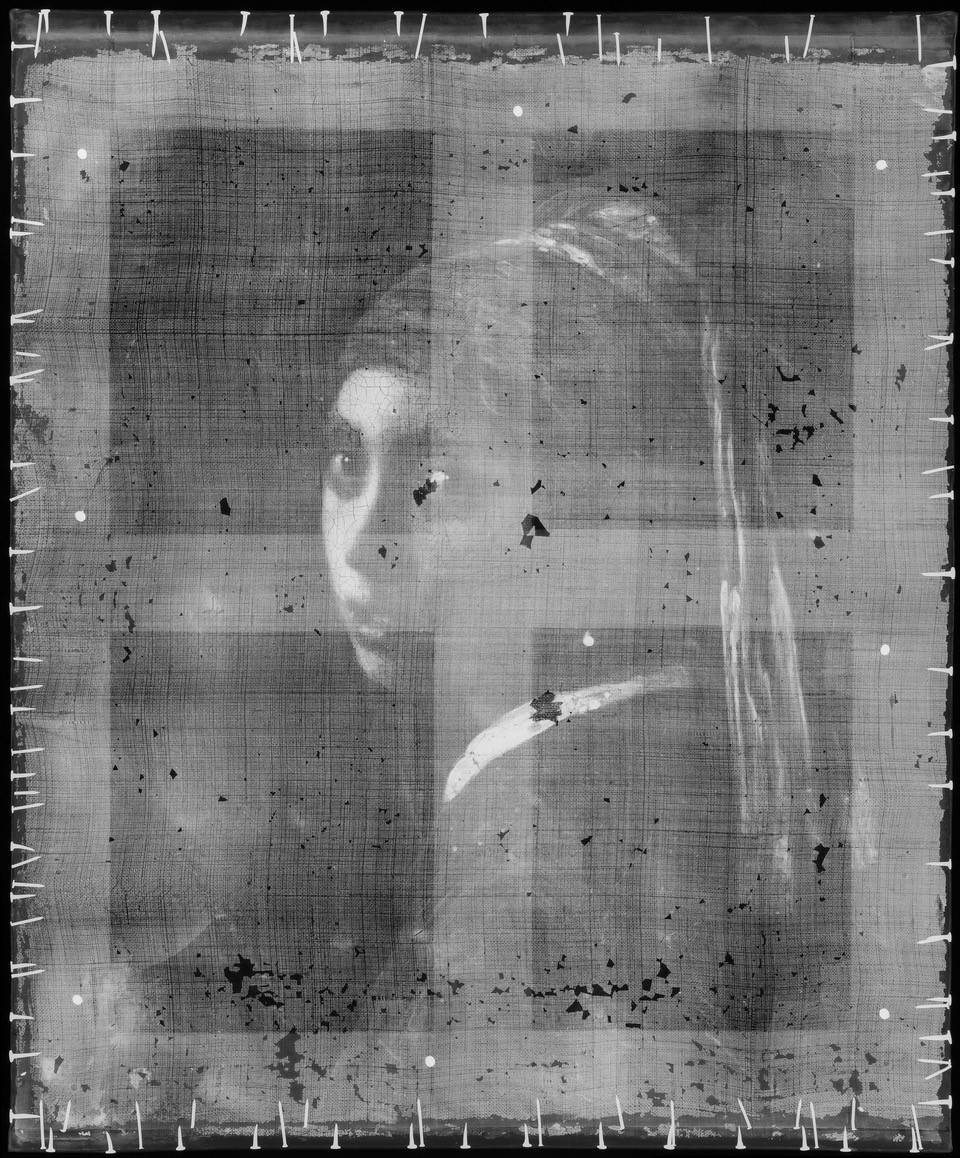In Vermeer’s time, cities around the Netherlands – especially Leiden, Haarlem and Amsterdam – were important centres for weaving and trading fabrics. Some flax was produced in the Holland, but most was imported from other parts of Europe, where it was cultivated for both its seeds and fibres. Linseeds were pressed to produce oil, which could be used to make oil paint (something I’ll talk about in a later blog entry). Flax fibres were taken from the skin of the plant stem. The coarse flax fibres were used to make rope and twine, while the longer ones were spun to make fine threads. These threads were woven on a loom to produce canvas fabric, which would then be sold as pieces, bolts, or rolls. Recent research by the Counting Vermeer project found that several pairs of Vermeer’s paintings came from the same roll of canvas, but unfortunately, the Girl with a Pearl Earring hasn’t yet found a ‘roll-mate’. Perhaps, in someone’s attic, there lies an undiscovered masterpiece.

